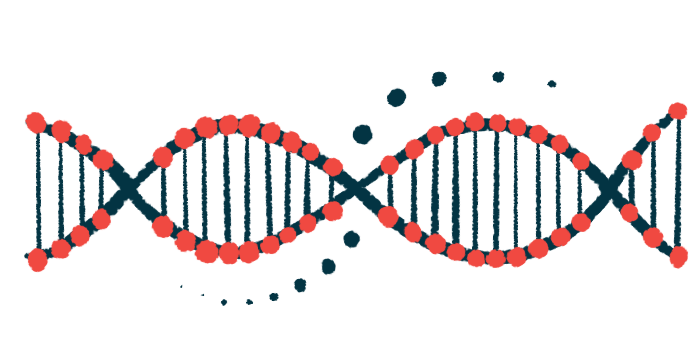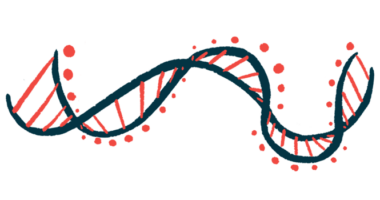Scientists design molecules that target genetic defects in FA
A-GOs found to boost frataxin production in patient-derived cells

Scientists have designed molecules to correct the effect of DNA expanded repeats that cause Friedreich’s ataxia (FA), according to a new study.
Using patient-derived cells, experiments demonstrated that these molecules, known as anti-gene oligonucleotides, or A-GOs, markedly boosted the production of frataxin, which is the protein that’s deficient in people with FA.
Addressing root cause of disease
“Our approach is to address the root cause of the disease, which is the [DNA] expanded repeats,” scientists wrote.
The study, “Anti-gene oligonucleotides targeting Friedreich’s ataxia expanded GAA•TTC repeats increase Frataxin expression,” was published in Molecular Therapy Nucleic Acids.
The FXN gene provides the instructions for frataxin, a protein that’s critical for the functioning of mitochondria, which are the cell’s energy centers.
One part of the FXN gene contains a segment wherein three DNA building blocks, GAA, are repeated several times, typically up to 33 times. People with FA, however, carry a GAA trinucleotide repeat expansion, meaning GAA in both copies of their FXN gene is repeated from 66 to more than 1,000 times.
Studies suggest these extra-long GAA repeats can form abnormal triplex structures, or a triple helix with three DNA strands instead of the well-known double helix with two DNA strands. As a result, frataxin production is disrupted, which impairs mitochondrial function, particularly in cells with high energy needs, such as nerves and muscles. This can give rise to symptoms.
Antisense oligonucleotides (ASOs) are short, lab-made stretches of DNA- or RNA-like molecules designed to bind to specific RNA strands, ultimately affecting protein production. In fact, ASOs directed against abnormal FXN RNA boosted frataxin production in patient-derived cell lines. However, translating ASO treatment from cells to animal models has proven challenging.
A team led by scientists in Sweden has now developed a type of ASO that binds to GAA repeated expansions in DNA, dubbed anti-gene oligonucleotides to prevent abnormal triplex formation.
“In contrast to the conventional approach of ASOs, A-GOs are designed to specifically target and modulate gene expression at the chromosomal level,” the scientists wrote.
First, the team designed various A-GOs of different lengths containing different mixes of natural DNA building blocks, as well as modified ones called locked nucleic acids, or LNAs, which are thought to boost the binding potency.
Using cells derived from a female FA patient, who carried 330 GAA repeats in one FXN copy and 380 in the other, an A-GO with 15 building blocks significantly increased the levels of FXN messenger RNA (mRNA), the molecule that serves as a template for frataxin protein production.
When LNA content was tested, those with a high content (67%-69%) were toxic to cells, making them unsuitable as therapeutic candidates in FA, the team noted.
When different A-GO lengths were assessed, the longest, with 24 building blocks (GAA24), increased mRNA expression more than shorter A-GOs and nearly twice as high as controls. Conversely, when calcium chloride was added to the growth media to facilitate cell delivery, shorter A-GOs were more potent at boosting mRNA expression. Still, under the same conditions, longer A-GOs proved more effective at lower doses than shorter A-GOs. The results were the same when cells derived from a male FA patient with a similar number of GAA repeats (294/405) were used.
Potential therapeutic agent for FA treatment
“GAA24 holds a better promise for FXN upregulation at lower concentrations, rendering it of interest as a potential therapeutic agent for the treatment of [FA],” the researchers wrote.
In line with mRNA studies, the production of frataxin protein was also significantly increased when FA cells were treated with the longer A-GO (GAA24).
Further experiments confirmed these findings in cells derived from a female FA patient with extra-long GAA repeats of 780 and 1410.
“We demonstrated that the A-GO targeting concept is valid in three [FA] male and female patient-derived cell lines carrying different [GAA] repeat expanded [genes],” the scientists wrote. “This suggests that they can potentially be developed as a treatment option for [FA] as well as tools for investigating the dynamic DNA structures at the FXN locus.”







